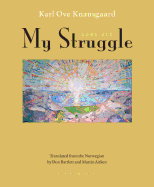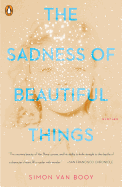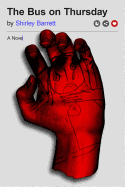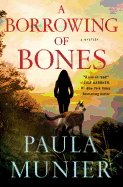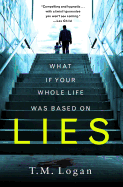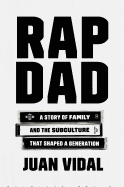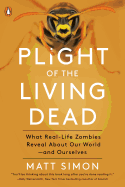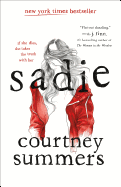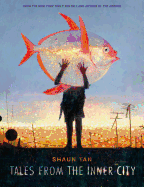DK Eyewitness's team of mapmakers talks about how they make the best maps for today's travelers:
How crucial are your maps for today's travelers?
 When planning a trip, it's great to get a good geographic context, to work out how the different parts of the destination link together. Understanding the layout of a city or region is the first step to really starting to connect to it and maps are the best way to do this. The maps drawn for our books are designed expressly for the readers and show only what is helpful to navigate and explore somewhere new without anything cluttering the maps, all while keeping them as wonderful to look at as possible.
When planning a trip, it's great to get a good geographic context, to work out how the different parts of the destination link together. Understanding the layout of a city or region is the first step to really starting to connect to it and maps are the best way to do this. The maps drawn for our books are designed expressly for the readers and show only what is helpful to navigate and explore somewhere new without anything cluttering the maps, all while keeping them as wonderful to look at as possible.
Not only are they practical tools, but maps can in their own right be beautiful things. Flicking through a book, most people will pause at a map to explore. Maps and guidebooks are treasured long after the trip is over. The travel-worn guidebook collection is as much of a reminder of a holiday as the photographs taken, and books can sometimes be the much-needed physical memento on the shelf.
How are they different from maps of the past?
Our guidebooks have many images which are hand-drawn, sketched or painted but the maps we make are all produced 100% digitally. The tools we use mean we can adapt and change maps very quickly to keep things current, so the maps can serve their essential purpose, which is to show where things are as clearly as possible.
Do today's travelers have different expectations about maps--and do they use them differently from the way travelers of the past did?
On the whole people use maps for exactly the same purpose as they did centuries ago, to find out where things are. Most daily interactions with maps are the online mapping services which tend to be dedicated to efficient navigation more than location and experience.
There is a big difference between online mapping and our printed cartography, which is immediately apparent when you look at our maps. We undertook some major research to see how travel guides are used in these days of Google maps and social media. The near consistent response was that our maps were loved and trusted for how they present information, and how they can help you learn more about a place above and beyond just how to get around.
What are the most popular kinds of maps for today's travelers?
 It depends on the traveler and destination. If you are heading to Rome for a week, then a clear, localized mapping is perfect, but a week hiking in the Cascades requires more dedicated topographic sheetmapping.
It depends on the traveler and destination. If you are heading to Rome for a week, then a clear, localized mapping is perfect, but a week hiking in the Cascades requires more dedicated topographic sheetmapping.
Online mapping such as Google maps is hugely popular and it is a fantastic resource, but when you add roaming charges, battery limitations and the risk of losing devices, printed maps are still rightly popular. You can annotate and make your map your own on paper much easier than online and you connect more with a physical thing, it becomes much more part of the experience.
You will always explore a destination more with a map, but if you are following the quickest route given by your phone you can isolate yourself from the locations around you, whereas a printed map opens you up to so many more opportunities.
How much do you revise maps from one edition of a travel guide to the next?
Every map is checked over for every edition by the team. Authors, editors, updaters and of course the cartography team each focus on different elements to ensure everything is correct.
How has map making changed in the digital era and with GPS?
It's an entirely new world! Anything that can produce a set of coordinates can be used as a tool to make a map and most smart phones can capture incredibly detailed GPS coordinates, suddenly everyone with a phone can start getting involved in map making. As a result, digital map data is now available for pretty much every place on the planet easier and cheaper than ever, the problem is not all of it is as reliable as we would hope which means we still need to check the data we use.
The digital map data is always just a starting point for us to build maps and the sheer amount of data means we have to edit down more than ever to ensure maps are as clear as possible.
How up to date are your maps?
We are checking the maps up to the point we send the books to the printers.
How detailed are your maps?
 The level of detail we show on a map depends on what we are trying to show. A map covering the whole of greater Tokyo showing every road would be so busy as to be totally useless, successful maps are as much to do with what is left out than what is shown. Maps of smaller areas can include more detail to really help navigate your way around on foot by showing and labelling pedestrian areas, footbridges and streams. The great thing about the design of the new Eyewitness Guides is we have now got more space than ever for the mapping, meaning we can map the destination to the page as clearly as possible.
The level of detail we show on a map depends on what we are trying to show. A map covering the whole of greater Tokyo showing every road would be so busy as to be totally useless, successful maps are as much to do with what is left out than what is shown. Maps of smaller areas can include more detail to really help navigate your way around on foot by showing and labelling pedestrian areas, footbridges and streams. The great thing about the design of the new Eyewitness Guides is we have now got more space than ever for the mapping, meaning we can map the destination to the page as clearly as possible.
How do you coordinate maps that are in printed books and maps online?
We produce e-book versions of our guides that contain everything the printed book holds, including the maps, of course!
What are the most common misconceptions among readers about your work?
A common misconception is the maps team are endlessly jetting off around the world. Thanks to the work of the authors and our access to up-to-date digital data we tend, regrettably, to not leave our desks.
We do however learn the world remotely which can be a unique experience when you arrive in a city you've never been to and discover you know your way around just from working on the maps for years and years.
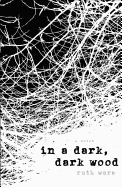 In a Dark, Dark Wood (Scout Press/Gallery $16) by Ruth Ware is a super-suspenseful thriller that begins at the end, with Leonora, the main character, waking up in a hospital bed, so you know something bad is going to happen at this "hen weekend" (Brit for a bachelorette party), where secrets lurk. The setting of the party--a glass house surrounded by dark woods--ups the ominous atmosphere of the story.
In a Dark, Dark Wood (Scout Press/Gallery $16) by Ruth Ware is a super-suspenseful thriller that begins at the end, with Leonora, the main character, waking up in a hospital bed, so you know something bad is going to happen at this "hen weekend" (Brit for a bachelorette party), where secrets lurk. The setting of the party--a glass house surrounded by dark woods--ups the ominous atmosphere of the story.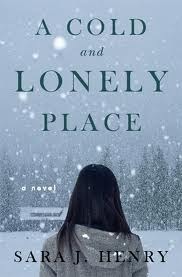 A wintery Lake Placid, N.Y., is the appropriately chilling location of A Cold and Lonely Place (Broadway Books, $15) by Sara J. Henry. After a body is found in the ice during preparation for a winter festival, the story moves forward with slow-burning tension. The frigid, dark surroundings add to the novel's foreboding feeling.
A wintery Lake Placid, N.Y., is the appropriately chilling location of A Cold and Lonely Place (Broadway Books, $15) by Sara J. Henry. After a body is found in the ice during preparation for a winter festival, the story moves forward with slow-burning tension. The frigid, dark surroundings add to the novel's foreboding feeling. Another snowy locale--Minnesota--enhances the sinister mood of The Life We Bury (Seventh Street Books, $15.95) by Allen Eskens. This thoughtful, gripping mystery about family and memory is off and running when a college student's interview with an aging Vietnam veteran uncovers a 30-year-old murder.
Another snowy locale--Minnesota--enhances the sinister mood of The Life We Bury (Seventh Street Books, $15.95) by Allen Eskens. This thoughtful, gripping mystery about family and memory is off and running when a college student's interview with an aging Vietnam veteran uncovers a 30-year-old murder.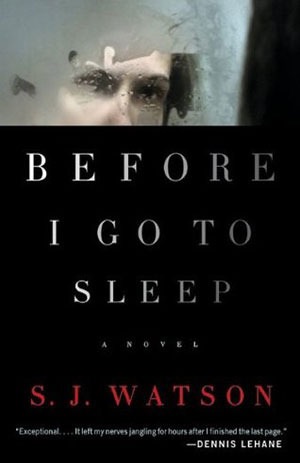 Finally, the thrills and chills don't let up in Before I Go to Sleep (Harper, $15.99) by S.J. Watson. This unsettling novel centers on Christine, a woman with amnesia who relies entirely on her husband, Ben, to remind her who she is each morning--until she gets a mysterious phone call telling her, "Don't trust Ben."
Finally, the thrills and chills don't let up in Before I Go to Sleep (Harper, $15.99) by S.J. Watson. This unsettling novel centers on Christine, a woman with amnesia who relies entirely on her husband, Ben, to remind her who she is each morning--until she gets a mysterious phone call telling her, "Don't trust Ben."


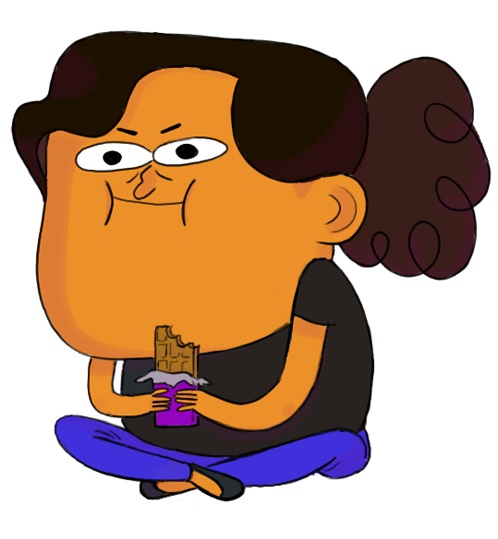
 In the book, women are self-sufficient. They know what they want. They're doing all the male and female jobs. Yet there's this yearning from Emiko, the young girl. She wonders what man was like. Emiko's grandma skirts around the questions with jokes. Do you think a world based solely on females could, or would, survive?
In the book, women are self-sufficient. They know what they want. They're doing all the male and female jobs. Yet there's this yearning from Emiko, the young girl. She wonders what man was like. Emiko's grandma skirts around the questions with jokes. Do you think a world based solely on females could, or would, survive?
 DK Eyewitness Travel is celebrating its 25th anniversary in style--with a stunning makeover that updates the guidebook brand for today's travelers. Known for travel guides whose visually appealing design makes it easy for readers to access all kinds of information about the places they're visiting, the publisher is relaunching the books with what publishing director Georgina Dee calls "the single largest investment" the company has ever made in its flagship series. The aim is to create travel guides that are "as much at home in your bag on your trip as on your coffee table when you get home" and that include information that "has been thoroughly researched, designed with love and will ultimately make your trip better."
DK Eyewitness Travel is celebrating its 25th anniversary in style--with a stunning makeover that updates the guidebook brand for today's travelers. Known for travel guides whose visually appealing design makes it easy for readers to access all kinds of information about the places they're visiting, the publisher is relaunching the books with what publishing director Georgina Dee calls "the single largest investment" the company has ever made in its flagship series. The aim is to create travel guides that are "as much at home in your bag on your trip as on your coffee table when you get home" and that include information that "has been thoroughly researched, designed with love and will ultimately make your trip better."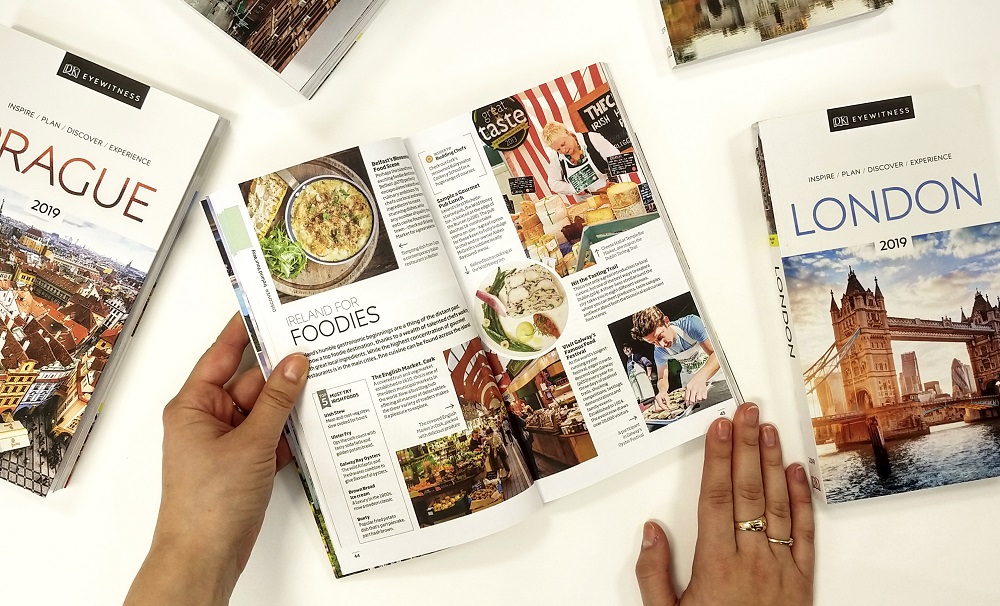 While the changes are extensive, Dee emphasized, the DK Eyewitness Guides remain true to the principles that have guided the series since its founding in 1993. They were originally conceived as the visual travel guide that "showed you what a destination had to offer before you went," Dee explains. The company has stayed true to that while having "today's traveler in mind. Our expertise in marrying visuals and text to give the reader multiple ways into the information is still as important to the guides as it was 25 years ago."
While the changes are extensive, Dee emphasized, the DK Eyewitness Guides remain true to the principles that have guided the series since its founding in 1993. They were originally conceived as the visual travel guide that "showed you what a destination had to offer before you went," Dee explains. The company has stayed true to that while having "today's traveler in mind. Our expertise in marrying visuals and text to give the reader multiple ways into the information is still as important to the guides as it was 25 years ago." Hand-drawn illustrations are also a key element of the guides and have been updated with an emphasis on clarity and their color. "We're thrilled with them," Dee notes.
Hand-drawn illustrations are also a key element of the guides and have been updated with an emphasis on clarity and their color. "We're thrilled with them," Dee notes. When planning a trip, it's great to get a good geographic context, to work out how the different parts of the destination link together. Understanding the layout of a city or region is the first step to really starting to connect to it and maps are the best way to do this. The maps drawn for our books are designed expressly for the readers and show only what is helpful to navigate and explore somewhere new without anything cluttering the maps, all while keeping them as wonderful to look at as possible.
When planning a trip, it's great to get a good geographic context, to work out how the different parts of the destination link together. Understanding the layout of a city or region is the first step to really starting to connect to it and maps are the best way to do this. The maps drawn for our books are designed expressly for the readers and show only what is helpful to navigate and explore somewhere new without anything cluttering the maps, all while keeping them as wonderful to look at as possible. It depends on the traveler and destination. If you are heading to Rome for a week, then a clear, localized mapping is perfect, but a week hiking in the Cascades requires more dedicated topographic sheetmapping.
It depends on the traveler and destination. If you are heading to Rome for a week, then a clear, localized mapping is perfect, but a week hiking in the Cascades requires more dedicated topographic sheetmapping. The level of detail we show on a map depends on what we are trying to show. A map covering the whole of greater Tokyo showing every road would be so busy as to be totally useless, successful maps are as much to do with what is left out than what is shown. Maps of smaller areas can include more detail to really help navigate your way around on foot by showing and labelling pedestrian areas, footbridges and streams. The great thing about the design of the new Eyewitness Guides is we have now got more space than ever for the mapping, meaning we can map the destination to the page as clearly as possible.
The level of detail we show on a map depends on what we are trying to show. A map covering the whole of greater Tokyo showing every road would be so busy as to be totally useless, successful maps are as much to do with what is left out than what is shown. Maps of smaller areas can include more detail to really help navigate your way around on foot by showing and labelling pedestrian areas, footbridges and streams. The great thing about the design of the new Eyewitness Guides is we have now got more space than ever for the mapping, meaning we can map the destination to the page as clearly as possible.
